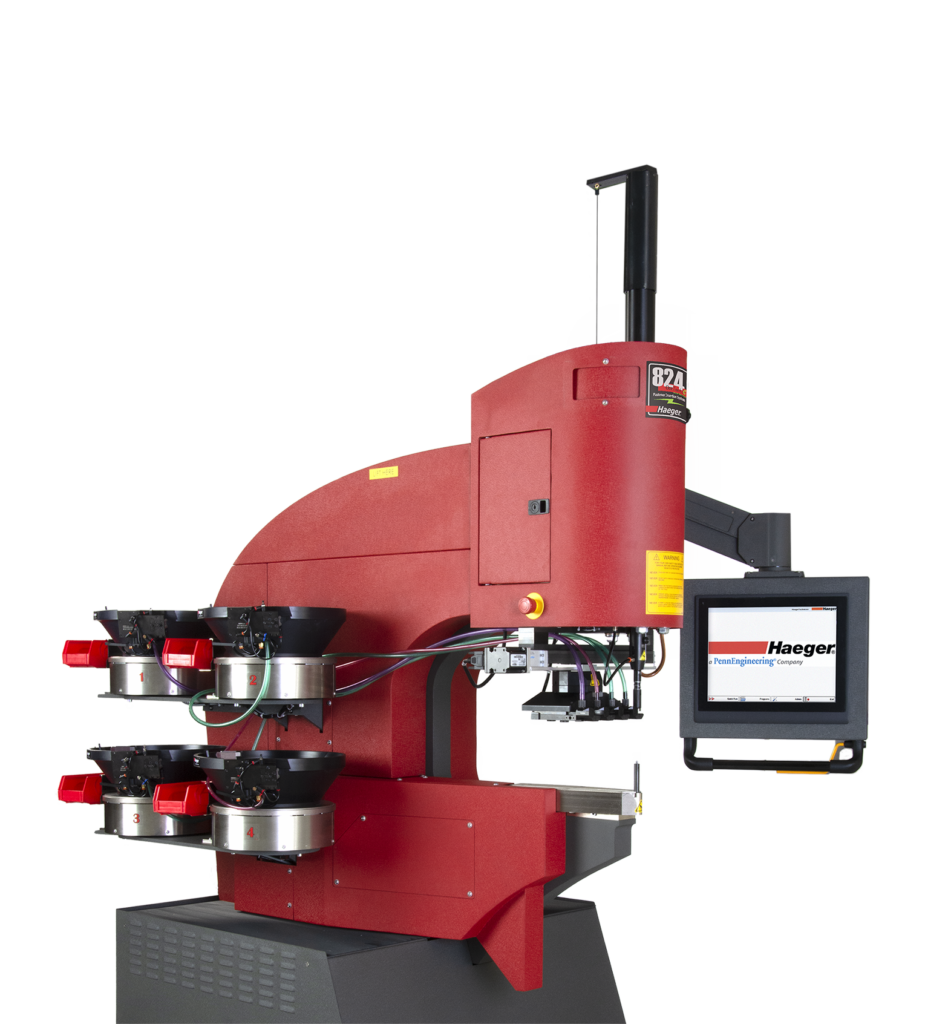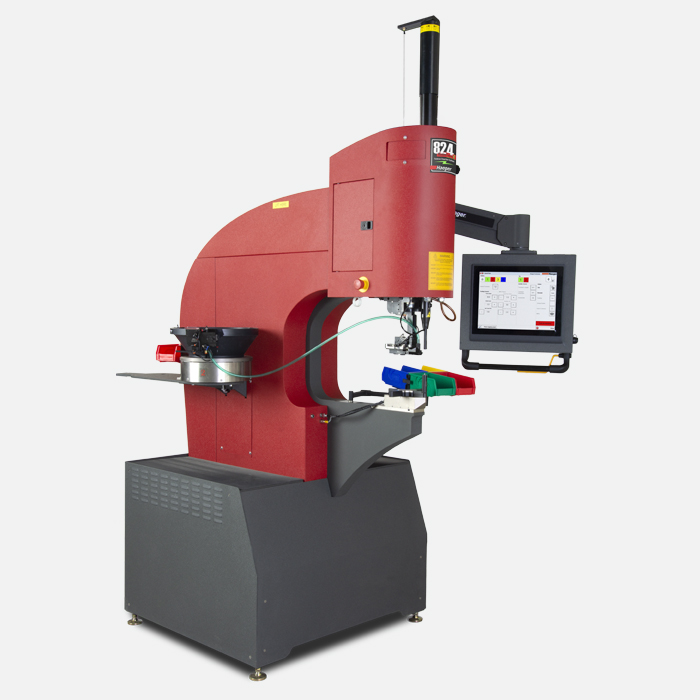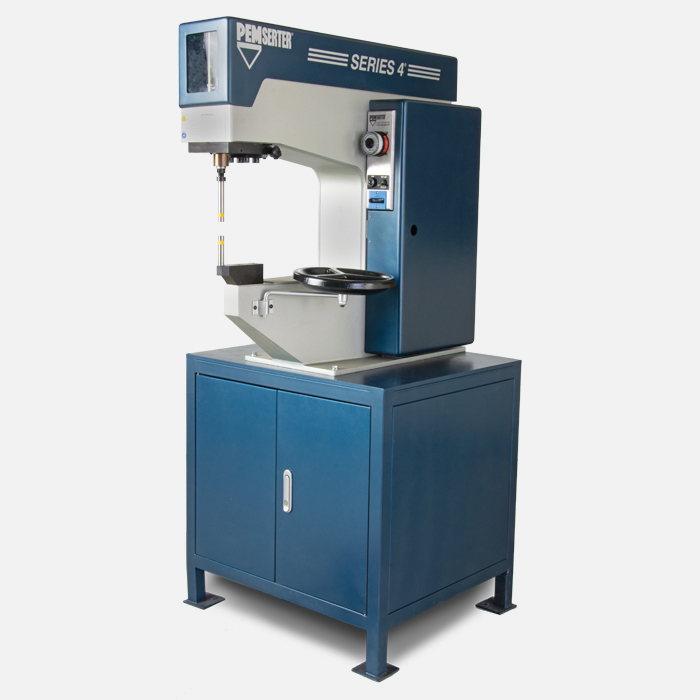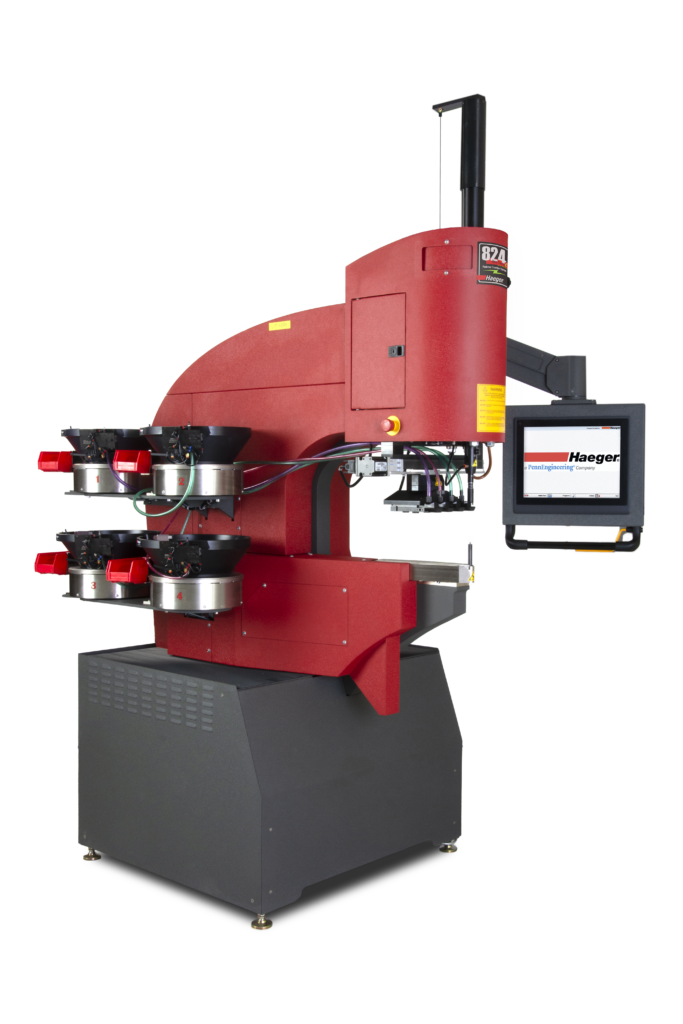Gaining Productivity From Fastener Insertion Machines
Most fabricators today recognize that their growth hinges on their ability to handle the widest variety of applications.

As part of the selection process for a machine system to install self-clinching fasteners, the spotlight will often focus first on the fasteners to be installed. All types will require a minimum tonnage (or ram force) from a press to achieve reliable fastener installation. In evaluating manual vs. automated equipment, job-volume factors (number of fasteners to be installed and how quickly) often serve as a guidepost.
But while many fastener-installation jobs may prove predictable and require only limited and/or fixed press capabilities, most fabricators today recognize that their growth hinges on their ability to handle the widest variety of applications. Users of insertion machines, while always keeping costs in mind, seek versatile equipment that will stand the test of time.
In fact, the question most often considered before a machine is purchased is whether it will be able to handle both current requirements and those that may arise (even unanticipated) in the future. Users realize that the capabilities of a machine in the long run will directly influence their capabilities in meeting all customer application needs.
Before any fastener-installation machine is added to an assembly line, however, the issue of productivity on the shop floor should be raised and resolved. A variety of factors ranging from how power is delivered to special diagnostics and safeguards can influence the extent to which a press will promote productivity goals.
Pneumatic vs. Hydraulic
By its nature an air-only or air-over-oil system is inherently faster (and, therefore, potentially more productive) than an all-hydraulic system. Faster variable speed stroke can be obtained in an air or air-over-oil system, as opposed to the lower, single speed stroke delivered by hydraulic machines. The faster cycling increases throughput and accelerates production. (Air or air-over-oil systems can be found in all models, whether manual, automatic, or fully automated.)


Users should be aware, however, that a long-standing industry concern with pneumatic machines has been the unpredictability of a shop’s air supply and its impact on the repeatability (and reliability) of fastener installation. (It is possible for the shop air supply to fluctuate. If the air pressure rises, excessive installation pressure may be applied and the workpiece may get damaged; if the air pressure decreases, installation force may be reduced and a fastener will not get properly installed.) These problems can be eliminated by the newer machines equipped with special pressure-monitoring technology.
In these machines, pressure transducers constantly monitor input air and insertion pressures to help ensure fastener-installation reliability, consistency, and optimum productivity. (The machine stops if the air pressure causes the insertion to fall to a level that could compromise fastener installation, and the press can be programmed to alert an operator to insertion errors.)
Job Volume and Insertion Rates
Productivity during fastener installation will further be influenced by job volume and fastener-insertion rates, as well as whether manual, automatic, or fully automated machines (or a combination of these) are utilized. (Users should also understand that productivity gains may offset increased costs relating to machine equipment.)
While fully automated equipment can provide fastener feeding rates at typically five or six times faster than those obtained with manual machines, the job volume must be high enough to justify the expense. (The rule of thumb is that if the number of fasteners to be installed is greater than 50,000, an automated press will serve as a relatively economical choice.)
But what about the growing job shops and smaller OEMs seeking higher fastener-installation rates than manual machines can deliver, but which are unable to justify the expense for more advanced fully automated machines? Systems such as the TECH2 automatic machine offer a solution.
This newest addition to the machine product lineup can compare favorably to conventional 6-ton manual equipment by enabling increased production rates and improved insertion quality utilizing full automation but without the associated costs. Fast operation in these “mid-range” machines is achieved utilizing a high-speed ram-to-anvil approach for insertion force from 600 lbs. to 6.5 tons occurring anywhere along the 5″ stroke.
Tooling Changeover and Compatibility
In the quest to boost productivity, users should explore the ease in which tooling can be changed to accommodate different types and thread sizes of self-clinching fasteners. For most machines, tooling setup and changeover can be accomplished in about five to ten minutes, especially if the design of the machine allows for the fastener feeder bowl to remain in place during a switch to other tooling.
In shops operating different types of machines, users should take steps to ensure that machines and tooling lend themselves to “vertical integration” (whereby manual and automatic feed tooling can be interchanged freely among different press models). This can reduce the need to order additional tooling (and incur more costs); from the perspective of productivity, interchangeable tooling maximizes machine utilization.
Users may also want to ascertain whether their machine manufacturer can design and develop special (non-standard) tooling compatible with existing machines when needed and whether or not anticipated. Otherwise, machine downtime could result and, in the worst case, equipment may become useless for a particular application.
A real-world example is the case of Metlfab Inc. (Frederick, MD), which installs a wide variety of PEM® stainless steel self-clinching fasteners in an array of fabricated components primarily for the electronics and telecommunications markets. For one customer, in particular, automation has proved both necessary and practical as suggested by job volume.
But, before Metlfab could begin to automate fastener installation for the application, special tooling was required to accommodate the specified PEM Type LKS self-locking self-clinching fasteners. In response, tooling specifically for this ongoing job was created with the goal to optimize Metlfab’s productivity.
Up to 200 aluminum-chassis assemblies can now be completed by Metlfab per production run with each assembled unit consisting of two dozen Type LKS fasteners. (By utilizing the PEMSERTER Series 2000® fully automated machine, up to 1,200 fasteners are installed per hour, according to Metlfab.)
The Safety Factor
The issue of safety is a top priority in any industrial setting, and equipment naturally plays a role. Experience documents that safe equipment will translate to increased productivity, especially as it instills and reinforces worker confidence and results in fewer accidents or disruptions.
Safety systems are standard in most automatic or fully automated fastener-installation machines, but their design and effectiveness can vary. A reliable safety system is one that is designed as an integral part of a machine (not as an “afterthought” or add-on feature.)
In particular, users should be aware that presses whose “safety systems” employ a conductive approach, where the tooling becomes part of the safety circuit. In this equipment, if a non-metallic part is utilized, the safety must be completely turned off (and rendered inoperable) to protect the workpiece. This affects productivity, since the press must be operated in a double-step mode.
The LIGHTSTREAMT system as part of the fully automated PEMSERTER Series 2000 machine is one example of an advanced (and integrated) component to ensure operator safety. The system activates in all modes of operation (with the first step established as the safety stroke) and features a single-fault tolerance design, whereby no single fault will compromise the operation of the system. Other system elements include double safety valves, synchronized safety sensors, transducer feedback with double inputs, and system reset.
Performing a job quickly may be the easiest way to achieve higher productivity, but a shop will likely fall short in meeting production objectives during fastener installation unless its presses are supported by good engineering and prove reliable, versatile, and safe.

installation SYSTEMs
Your workflow
just evolved